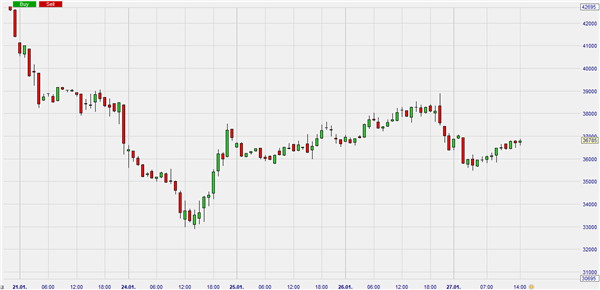Test NanoTrader Full I Test Tradingview I Test the mobile platforms All for CFD-Forex & Futures
You are here
Trading Mini-Crypto-Futures

In 2017, the Chicago Board Options Exchange (CBOE) and the Chicago Mercantile Exchange (CME) introduced the first crypto derivatives trading - Bitcoin futures. This was the beginning of mainstream crypto futures trading, and in less than 5 years, the volume of crypto futures traded has surpassed that of the spot market. In addition to the standard contract, there is now also a micro futures contract on bitcoin.
The rise of crypto futures can be attributed to several factors, and here are the benefits of trading crypto futures.
Advantages of NanoTrader Crypto Futures
WHSelfInvest has recently launched crypto futures trading - in particular Micro Bitcoin and plans to launch more altcoin futures. So why should you consider trading crypto futures on NanoTrader?
- Convenient hedge against spot market volatility: When trading crypto futures, you can seamlessly open long or short positions. Futures allow traders and investors to trade in all market conditions. In the cash market, you could only go long because you own the underlying cryptocurrencies. In the derivatives market, traders do not own the cryptocurrencies and can take long or short positions. Therefore, they can make profits in all market conditions. Unlike traders in the cash market, who can suffer losses in bearish conditions. They also allow for flexible trading strategies, meaning you can use different intraday trading strategies to take advantage of the inherent volatility of the crypto market.
- Fair pricing compared to spot markets: The price of crypto futures is usually settled daily based on a specific reference price that is applied to all similar futures contracts. This tends to curb the price volatility that is rampant in the spot market. For example, the price of micro bitcoin futures is based on the CME CF Bitcoin Reference Rate (BRR), which summarizes the price and volume of bitcoin trading on major spot exchanges. The daily settlement price is usually determined by the volume weighted average price (VWAP). The spot market is also more susceptible to manipulation by block traders or sensational news, resulting in frequent price fluctuations. However, the futures market is not as affected by these factors, which makes pricing in the futures market fairer than in the spot market.
- Futures trading is regulated: Most traders tend to avoid the crypto market because it is not regulated. But if you're a proponent of regulation, you'll be happy to hear that the CME and CBOE regulate crypto futures trading. This means that traders can always expect fair pricing and trade execution.
- Trading with leverage: Unlike spot trading, futures trading allows traders to use leverage, which means they can open larger positions with less capital. This exposure significantly increases potential profits. On the other hand, it also increases the potential losses. For this reason, strict risk management measures should be taken.

How to trade crypto futures in NanoTrader
If you want to trade crypto futures in NanoTrader, you need to send an email request to activate your account for it. Once you start trading, there will be a cost of $7 per transaction in addition to the exchange fee, which is charged per lot. You also need to deposit and maintain an intraday margin of at least 20%, otherwise your position will be liquidated. Overnight margin applies to all positions that remain open after 20:00 CET, as required by CME Group. In addition, open positions over the weekend must be 100% covered by the equity in your account.
Conclusion
Micro Bitcoin futures allow traders to participate in the price performance of digital currencies without owning a real cryptocurrency. It is a similar concept to stock indices or futures contracts on commodities, where an investor can take risks on the future value of a cryptocurrency. Note that WHSelfInvest complies with all trading conditions prescribed by the CME Group.



